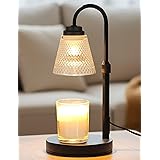Transforming your home often starts with small, impactful projects. Consider upgrading your stairwell. Many homes have dark, uninviting staircases. They lack modern appeal. Traditional lighting can be dull. It might not highlight architectural features. Imagine a dramatic change. Digital LED stair lighting offers this. It brings both beauty and function. Your stairs can become a stunning focal point. This guide helps you achieve that. The video above shows visual inspiration. It provides a glimpse into the process. We will dive deeper here. Learn to install your own DIY Digital LED Stair Lighting system.
What Are Digital LED Stair Lights?
Digital LED stair lights are advanced. They differ from standard LEDs. Each LED is individually addressable. This means individual control. You can change colors. You can create complex patterns. Think of flowing light effects. Imagine lights chasing each other. Picture a waterfall of color. These lights offer immense customization. They add a high-tech touch. Your stairs will feel futuristic. They also provide practical illumination.
Digital vs. Analog LED Strips
Analog LED strips are simpler. All LEDs on the strip act as one. You pick a single color. Or you choose a preset sequence. Digital LEDs are different. Each tiny LED has its own chip. This chip allows unique commands. You can light one LED. The next one can be off. This creates dynamic visuals. It offers much greater control. Digital LEDs use more wiring. They require a dedicated controller. But the results are stunning. They are worth the extra effort. For true stair lighting effects, digital is best.
Why Choose DIY Digital LED Stair Lighting?
There are many benefits. Safety is a primary concern. Well-lit stairs prevent falls. This protects your family. Aesthetically, they are amazing. Digital LEDs modernize your home. They add a sophisticated touch. Smart home integration is possible. Link them to your existing system. Control them with your phone. Enjoy voice commands. Energy efficiency is another perk. LEDs use very little power. They last for years. This saves money on bills. They also reduce maintenance. Fewer bulb changes are needed. Customization is key. Design unique lighting scenes. Match your mood or decor. Celebrate holidays with themed lights. The possibilities are endless.
Enhanced Safety and Visibility
Stairs can be dangerous. Poor lighting increases risk. Digital LEDs light each step. This clearly defines edges. It improves depth perception. Motion sensors can activate them. Lights come on as you approach. They turn off when you leave. This adds convenience. It boosts safety. No more fumbling in the dark. Your family will appreciate this. Guests will feel more secure.
Modern Aesthetics and Ambiance
Elevate your interior design. Digital LED lights look sleek. They create a high-end feel. Choose warm whites for comfort. Select cool blues for a modern vibe. Cycle through colors for parties. The ambiance shifts instantly. Your staircase becomes a feature. It draws the eye. It complements your home’s style. It can even become a conversation starter.
Essential Components for Your DIY Setup
Building your system requires several parts. Each component plays a role. Understanding them is important. We will cover the main items. These include LED strips themselves. You’ll need a controller. A power supply is vital. Sensors complete the package. Choosing the right parts ensures success.
Digital LED Strips: The Foundation
These are the light source. Look for individually addressable strips. WS2812B is a popular type. WS2815 offers 12V power. Higher voltage reduces voltage drop. This is good for longer runs. Choose the right density. More LEDs per meter mean smoother effects. Consider weatherproofing. IP65 or IP67 ratings are good. This protects against dust and moisture. Measure your stairs carefully. Get enough strip length. Always buy a little extra.
The LED Controller: Your Command Center
This brain runs the show. It tells each LED what to do. Common controllers include SP107E or SP105E. Wi-Fi controllers are popular. They link to your smartphone. App control is very convenient. You can program custom effects. Adjust brightness with ease. Set timers for automation. Consider a controller with music sync. Lights can dance to your tunes. It adds an extra layer of fun.
Power Supply: Fueling Your Lights
LEDs need specific power. A reliable power supply is crucial. It converts wall voltage. It provides the right DC current. Match the voltage to your strips. Usually 5V or 12V. Calculate total wattage needed. Add 20-30% for headroom. This prevents overload. A common rule is: Volts x Amps = Watts. Ensure it’s properly sized. An underpowered supply causes issues. Lights may flicker. They might dim unexpectedly. Choose a quality power supply.
Motion Sensors: Smart Activation
Sensors detect movement. They trigger the lights. PIR sensors are common. They detect body heat. Place them at stair top and bottom. This ensures seamless activation. Some controllers integrate sensors. Others need external ones. Connect them to the controller. The lights will greet you. They will guide your path. This adds a touch of magic. It also saves energy.
Tools and Materials You’ll Need
Preparation is key. Gather your tools first. This saves time. It prevents frustration. A clean workspace helps. Having everything ready makes installation smooth. You will need some basic items. Some are common household tools. Others are specific to electronics. Always prioritize safety gear.
Basic Hand Tools
- Measuring tape: For accurate cuts.
- Wire strippers: To prepare cables.
- Screwdrivers: For mounting and connections.
- Soldering iron (optional but recommended): For secure connections.
- Heat shrink tubing: For insulation.
- Utility knife: For cutting LED strips.
Electrical Components and Adhesives
- Electrical wire (18-22 AWG): For power and data.
- Connectors (JST SM for WS2812B): For easy strip linking.
- Double-sided tape or mounting clips: To secure strips.
- Hot glue gun: For extra security or tidying wires.
- Cable ties: For wire management.
- Aluminum channels/diffusers: To hide strips and diffuse light.
Step-by-Step Installation Guide
Installing your DIY Digital LED Stair Lighting system can be rewarding. Follow these steps carefully. Take your time. Precision prevents problems. Always test connections. Double-check your work. Safety first with all electrical tasks.
1. Planning and Measurement
Start with careful planning. Measure each stair tread length. Decide where to place sensors. Plan wire routing paths. Sketch your layout. This helps visualize the project. Account for power outlet locations. Map out the controller placement. This ensures a clean installation.
2. Preparing the LED Strips
Cut your LED strips. Cut only at marked points. These are usually copper pads. Attach connectors to each segment. Solder connections for reliability. Use heat shrink tubing. This protects exposed wires. Ensure proper data flow direction. Arrows often mark the direction. Connect power wires to each segment. This prevents voltage drop issues. Run separate power lines for longer strips. This keeps all LEDs bright.
3. Mounting the LED Strips
Clean all surfaces thoroughly. Dust and dirt reduce adhesion. Apply double-sided tape. Or use mounting clips. Attach the strips firmly. Place them under the lip of each step. This hides the strip. It diffuses light effectively. Ensure strips are straight. A level can help. Secure all wires neatly. Use cable ties or clips. Hide them if possible.
4. Wiring the Controller and Power Supply
Connect the LED strips to the controller. Data lines are crucial. Ensure correct data input/output. Connect the power supply. Match voltage and polarity (+/-). Connect sensors to the controller. Follow the controller’s manual. Secure all wire connections. Loose wires can be dangerous. They cause flickering lights. Test the system before final assembly.
5. Programming and Testing
Download the controller’s app. Connect to your Wi-Fi controller. Configure the LED type. Set the number of LEDs per strip. Explore various lighting effects. Adjust brightness levels. Fine-tune animation speeds. Test the motion sensors. Ensure they trigger lights correctly. Make any necessary adjustments. Enjoy your new DIY Digital LED Stair Lighting.
Tips for a Professional Finish
A few extra steps make a difference. These tips enhance aesthetics. They also improve durability. Pay attention to details. It elevates your project.
- **Use Aluminum Channels:** These conceal the strips. They diffuse light evenly. They protect the LEDs.
- **Hide Wiring:** Route wires cleverly. Run them under carpets. Or behind baseboards. A neat look is essential.
- **Test as You Go:** Don’t wait until the end. Test each segment. Test each connection. This catches problems early.
- **Weatherproof Exposed Areas:** If any part is outdoors, seal it. Use silicone sealant. Protect connections from moisture.
- **Consider Diffusers:** These spread the light. They eliminate harsh bright spots. The result is a softer glow.
Your new DIY Digital LED Stair Lighting system will impress. It combines safety with stunning visuals. It’s an upgrade you’ll enjoy daily. Get ready to transform your home.











